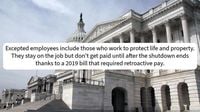On Sunday, October 12, 2025, Washington, D.C. woke up to a quieter National Mall and shuttered doors at some of its most beloved institutions. The Smithsonian museums and the National Zoo, icons of the city and magnets for millions of tourists each year, closed to the public as the federal government shutdown dragged into its twelfth day. The closures, announced days earlier on social media by the Smithsonian Institution, marked a somber milestone in the ongoing budget standoff in Congress, with ripple effects felt far beyond the marble halls and animal enclosures.
"We will update our operating status as soon as the situation is resolved," the Smithsonian stated in a social media post, adding, "We do not plan to update social media other than to inform you of changes to our operating status." The message was clear: until lawmakers reached an agreement, the doors would remain locked, and the city’s cultural heartbeat would skip a beat.
The impact was immediate and visible. Food trucks that usually lined the Mall, drawing steady streams of hungry visitors, suddenly found themselves without customers. Dimitri Zalaf, owner of DC Food Wagon, summed up the frustration in an interview with 7News: "That’s a good question. Where are we gonna go? Where are the tourists? Where are they gonna go? All those people, they already booked their flights." For Zalaf and his fellow vendors, the closure was more than an inconvenience—it was a sudden loss of income. "This is income, bringing money to the city. Why are we stopping it?" he asked, echoing the concerns of many small business owners in the area.
The shutdown’s effects didn’t stop with the food vendors. Tourists, some of whom had planned their trips for months, scrambled to make the most of their time before the closures took effect. Tim Machonga, visiting from the suburbs of Chicago with his son Jaxson for his ninth birthday, told 7News, "Planning definitely took some time, a lot more than I expected, but it all worked out and ended up being here on this beautiful day, so can't ask for much more than that." Others, like eight-year-old Molly from Palm Beach, Florida, managed to squeeze in a last-minute visit to the zoo. "I saw pandas, I saw the sloth bear, and I went into the big ape house," she recounted happily, with her mother Bettina adding, "I think that we’ll see a resolution soon, I hope, and in the meantime, I do hope that all the furloughed workers see their back pay."
For many locals, the Smithsonian museums and the National Zoo are more than tourist attractions—they’re points of pride, places to show off the best of their city to out-of-town guests. Vanessa Furtado, whose parents were visiting from Chicago, expressed her disappointment: "The fact that everything is free for people to come and see is a big draw for folks. Big bummer when it’s shut down." She didn’t mince words when asked if she had a message for Congress: "Come to the table and start talking to each other, hardworking government employees who are doing their jobs not getting paid. So, let’s end the shenanigans."
The Smithsonian's closure affected all 21 of its museums, as well as research centers and the National Zoo. The institution had managed to keep its doors open for the first 11 days of the shutdown by relying on prior-year funds, but those reserves finally ran dry. According to NPR, the Smithsonian receives roughly 62% of its funding from the federal government, a critical lifeline that supports its commitment to free admission for all. Without that funding, and with no sign of a breakthrough in Congress, the shutdown’s reach extended from the halls of power to the city’s most treasured public spaces.
While visitors and staff alike mourned the loss of access to the museums and zoo, concern quickly turned to the well-being of the animals. Social media buzzed with questions about the fate of the National Zoo’s famous residents, including the beloved pandas. The Smithsonian moved swiftly to reassure the public, stating, "All the animals at the Zoo and at the Smithsonian Conservation Biology Institute in Front Royal, Virginia, will continue to be fed and cared for. A shutdown will not affect our commitment to the safety of our staff and standard of excellence in animal care." However, the zoo’s popular animal cams, which allow fans from around the world to check in on their favorite creatures, were deemed nonessential and would remain off for the duration of the shutdown.
The Smithsonian’s predicament was just one example of a broader crisis rippling through federally funded sites across the country. National parks and other federal facilities also closed their doors as staff were deemed nonessential and sent home. On Friday, October 10, thousands of federal employees—including those at the Department of Health and Human Services and the Department of Education—began receiving reduction in force notices, warning them of impending layoffs. The uncertainty weighed heavily on workers and their families, as well as on the myriad businesses and communities that depend on a steady flow of visitors and government activity.
For now, the fate of the Smithsonian museums and the National Zoo rests in the hands of lawmakers on Capitol Hill. As the shutdown drags on, the city’s cultural landscape remains dimmed, its streets a little quieter, its iconic institutions waiting for the day when the doors can swing open once more. Until then, the animals will be cared for, the exhibits will gather dust, and the city will hold its breath, hoping for a swift end to the political impasse that has left so many in limbo.
Washington’s museums and zoo have weathered storms before, but the current shutdown serves as a stark reminder of just how intertwined the city’s public treasures are with the workings of government. For the tourists who made it just under the wire, for the food truck owners searching for new spots, and for the families hoping to show their kids the wonders of science, history, and nature, the wait for normalcy continues—one day at a time.

